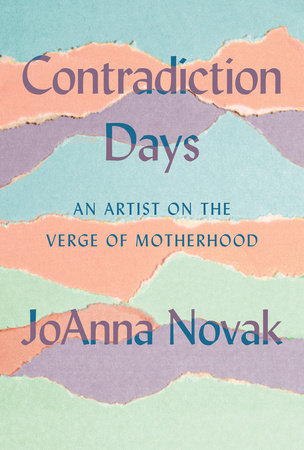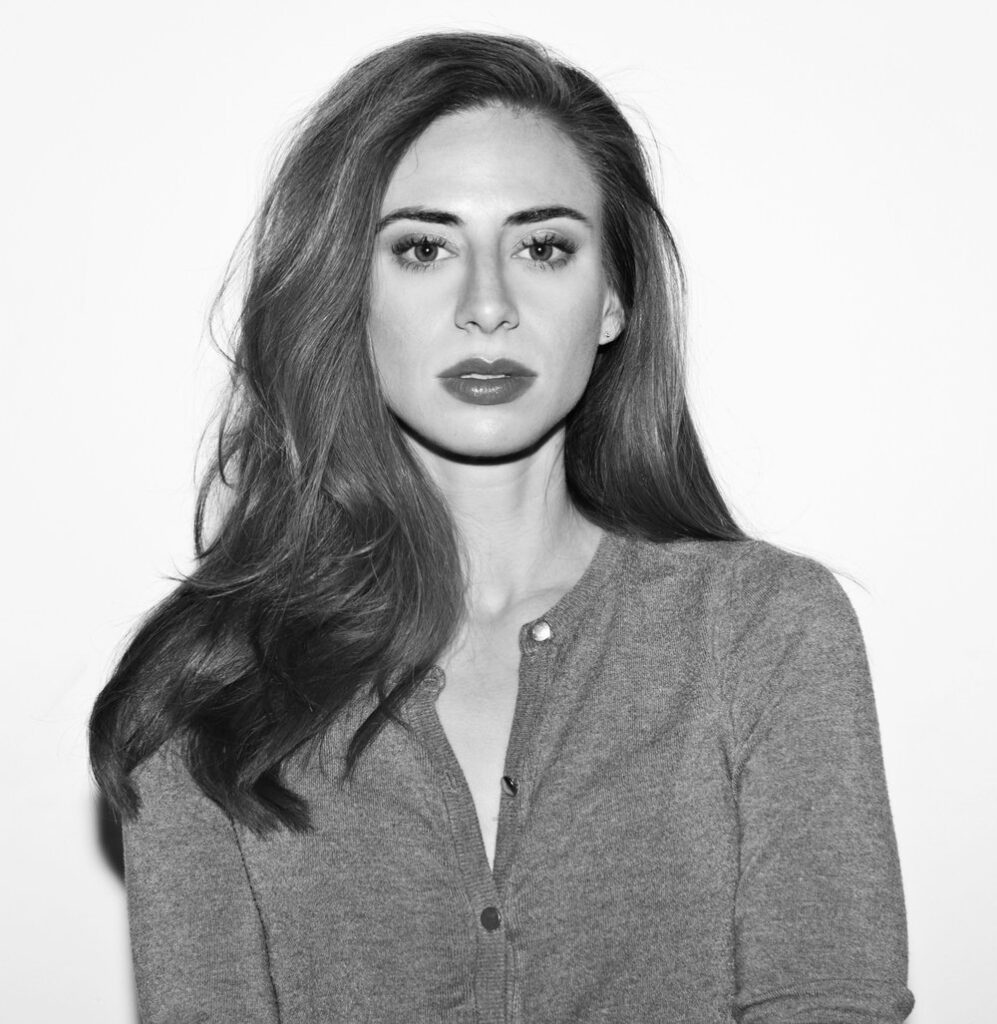There’s been growing awareness, in recent years, of the psychological toll new motherhood can take—and yet prenatal depression remains stubbornly shrouded in taboo. A pregnant woman, it’s commonly agreed, should be a happy woman, at peace with her changing body and glowing with expectant joy.
In her mesmerizing and exquisitely rendered memoir Contradiction Days: An Artist in the Verge of Motherhood, JoAnna Novak upends this ideal, conjuring the dissonance of suffering from depression while nurturing new life. Five months pregnant and beset by self-doubt, she becomes consumed by the work of abstract expressionist painter Agnes Martin, who pursued her art with intense dedication while coping with mental duress. Finding hope in Martin’s doctrine of joyful solitude, Novak follows in her idol’s footsteps to Taos, New Mexico, determined to find a path forward as an artist and a mother.
I spoke with Novak about the myth of the solitary artist, the connection between art-making and caregiving, and the power of using just the right word at the right time.
Nicole Graev Lipson: I’m curious when you first became aware of Agnes Martin’s work. Was it love at first sight or an acquired taste?
JoAnna Novak: In 2019, around the time I found out I was pregnant, I began looking for models of people who were creatively productive in spite of mental illness, and Martin is thought to have possibly been paranoid schizophrenic. I discovered that she espoused this life-affirming, disciplined philosophy that seemed so grounded and cogent. A lot of Martin’s writings were given as lectures, and you can hear in them that instructional, encouraging voice. When I was pregnant, it was really important to me to have someone talking in my ear about creativity this way.
It’s funny—a year after I wrote the book’s first draft, I was going through some old papers and found a postcard from a friend sent the year after I graduated from college. It was a picture of Venice Pier and on the back were Agnes Martin quotes. I’d completely forgotten that I’d received this postcard or had any prior familiarity with Martin’s work.
NGL: Martin’s paintings, too, became a mentor text for you. “I wanted to write sentences as clearly, as humanly, as Martin drew graphic lines across the canvas,” you explain. Tell me more about the connection, for you, between visual art and writing.
JN: I believe any exposure to art that speaks to you gets into your artistic marrow a little. I found Martin’s paintings calming and ethereal, and yet ordered in a way that belies none of the sort of chaos one might feel under mental duress—certainly under the mental duress I was in the throes of at the time. It was very important to me, especially as I revised the book, to keep asking myself, “How do I write this sentence clearly without sacrificing its beauty or humanity?”
NGL: Why was it important to you to immerse yourself in Martin’s geographical surroundings instead of studying her from afar?
JN: I knew that I wanted to try to live like Martin, to unplug and live in a very frugal way. Martin famously dropped out of the New York art scene in 1967, when she was seeing a lot of success. That kind of turning away from society to see what self-sufficiency yields in a different landscape really spoke to me. I felt I was entering a whole new landscape in becoming a mother, and this uncharted terrain demanded that I physically take myself to another place to do this work. Martin also talks about the importance of free and easy wandering for the artist, a kind of being without an agenda. Maybe it’s the mountains and the desert, but this feels more possible to me in New Mexico. I’m reminded there how little my earthly or material desires really matter.
NGL: You’re drawn to Martin because of her solitary, pared down existence. And yet, your husband is also with you on this retreat. What did you discover in Taos about marriage in relation to artistic solitude?
JN: If the narrator of this book is conducting an experiment on solitude, then by design the experiment is bound to fail for the very reason you just stated. She’s got her husband, she’s got her dog, and she’s pregnant, so she’s never alone! I appreciated having that kind of levity in the book. The older I get, the less affection I have for the myth of the solitary artist, which I think can be damaging, especially for people prone to depression or whose isolation can take a dangerous turn. In some ways, this experiment was really about getting up to the edge of what a solitary life would be like, and then realizing, I’m glad that my husband is here, and that we can have dinner together, or have sex, or laugh about whatever we’re laughing about.
NGL: There’s a scene in the book where you’re seized by feelings of overwhelming dysmorphia while trying on maternity clothes. It seems to me that women are encouraged their whole young lives to be thin, and then the moment they become pregnant, to embrace their growing bodies like joyful earth mamas. Was this reversal something you were trying to shine a spotlight on?
JN: Yes. I don’t think it’s accidental that I mention Goop in the first 25 pages of this book. There’s a lot of really psychologically ravaging stuff that women have to deal with when pregnant, a lot of it related to bodily autonomy. I was thinking recently how, if it weren’t for this book coming out, so many people in my life would have no clue that I felt any of this when I was pregnant—that I hated my body, or that I was depressed, or that I was suicidal. When I’d have dinner with colleagues or talk with family or friends, there was so much expectation that positive emotion be brought to the conversation. It didn’t feel like there was room to express what I was feeling.
NGL: At one point, you describe yourself as a woman “whose reproductive urges have been satisfied by her art”, and at another you note seeing a “trace of the maternal” in Martin’s paintings. What’s the connection, for you, between art-making and caregiving?
JN: I think art-making is a kind of caregiving to the self, just giving oneself time to exist with a page or canvas or whatever one’s medium. I also try to take the lessons I’ve learned from writing and apply them to taking care of another person—specifically my son. It’s important to me to let him lay on the floor and spend time drawing in his sketchbook, or to point out things or words that are beautiful. We’ll say a word like “Flamingo” a bunch of times and sort of relish it, which my son thinks is very funny.
NGL: Speaking of words, you have a very impressive vocabulary! I actually had to look up a number of words as I read, like cordiform and coruscating.
JN: To me, words are like Fabergé eggs, and I’m a princess from another century. I have the luxury to take any of these eggs, and hold them, and delight in them. I’m enraptured by the way sounds can come together to instantly create a mood or transport me to another place.
These days, I feel especially keen on using language that’s not commonplace because of everything happening with AI. The internet has been flattening language for a while, even though there are ways that internet-speak is exciting in its own right. It’s important to me to give a word like cordiform it’s time. It’s the right word. It’s a precise word, and so I like being able to use it.
NGL: I’ll never look at my own dog’s nose the same way. Every time I see it now, I think, Look at his cordiform nose. It’s the perfect word.
JN: Yes, and there’s something about writing nonfiction specifically that makes me want to be crystalline in my expression.
NGL: I was so moved by your book’s final pages, where your son enters as a human in the world. Now that you are a mother, what’s it like for you to look back on the “verge” period your book explores?
JN: I rewrote this book six or seven times, and by the seventh time, I felt very far from being in that verge state. I did feel sad for my former self—and also grateful, too, for what that time ultimately helped me see. I couldn’t have imagined the wholeness I’d feel in becoming a mother, the sense of cosmic wellbeing. As I just was sharing, even a vowel can give me a lot of feelings. But I just don’t have words for how motherhood has changed my capacity to feel—and to feel for others—in a deeper way.











